Frankfort, KY Pollen and Allergy Report for Summer 2023
Pollen Allergy Trends in Frankfort, KY
When is pollen lowest in Frankfort, KY?

February
Lowest month total PPM
Avg. PPM
When is pollen highest in Frankfort, KY?

April
Highest month total PPM
Avg. PPM
How does pollen in Frankfort, KY compare to Kentucky?
Frankfort has a higher average PPM than the state of Kentucky.
Frankfort yearly avg PPM:
Kentucky yearly avg PPM:
How does pollen in Frankfort, KY compare to the USA?
Frankfort has a lower average PPM than the USA.
Frankfort yearly avg PPM:
USA yearly avg PPM:
Is pollen worse this year in Frankfort, KY?
Spring 2023 was worse than spring 2022.
Spring 2023 PPM:
Spring 2022 PPM:
Average PPM in Frankfort, KY
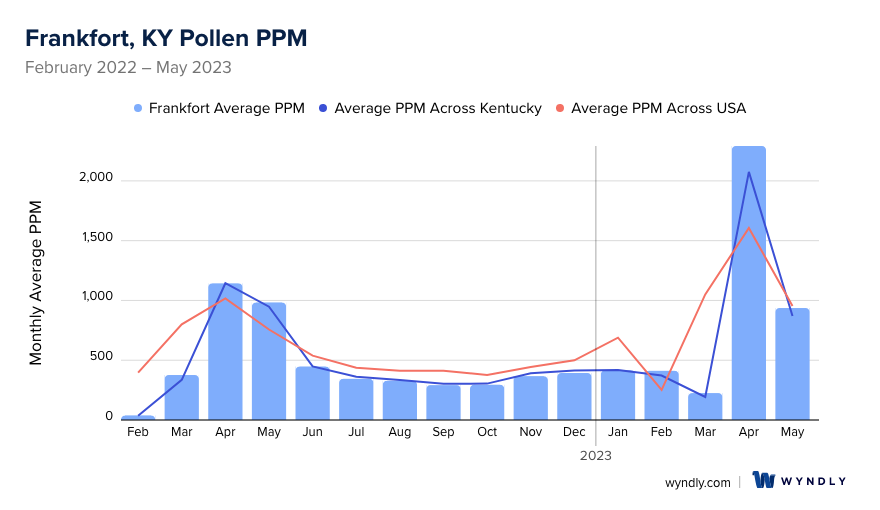
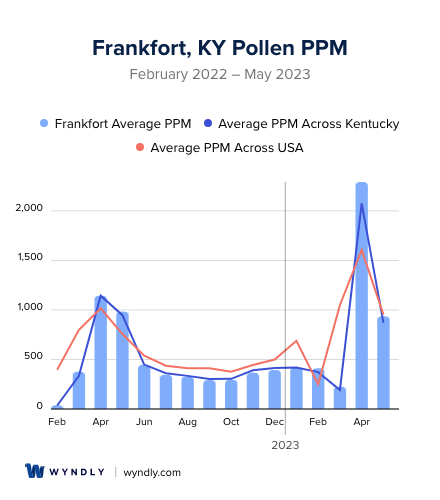
Frankfort, KY Pollen and Allergy Breakdown by Month
Grass
When is grass pollen highest in Frankfort, KY?
April has the highest grass pollen in Frankfort, KY with an average PPM of
When is grass pollen lowest in Frankfort, KY?
September has the lowest grass pollen in Frankfort, KY with an average PPM of
Tree
When is tree pollen highest in Frankfort, KY?
April has the highest tree pollen in Frankfort, KY with an average PPM of
When is tree pollen lowest in Frankfort, KY?
February has the lowest tree pollen in Frankfort, KY with an average PPM of
Weed
When is weed pollen highest in Frankfort, KY?
April has the highest weed pollen in Frankfort, KY with an average PPM of
When is weed pollen lowest in Frankfort, KY?
February has the lowest weed pollen in Frankfort, KY with an average PPM of
Frankfort, KY Pollen Monthly Breakdown by Pollen Type
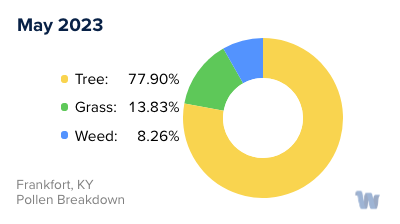
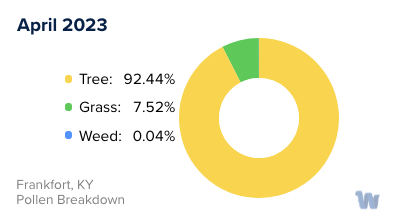

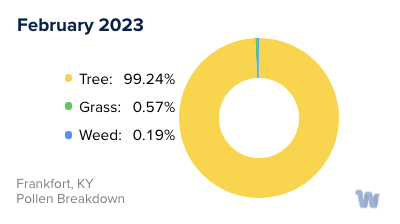
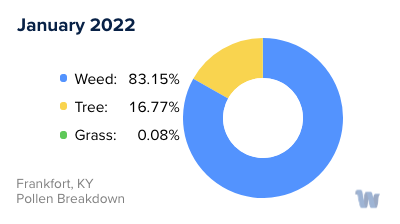
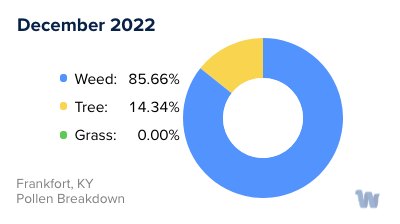
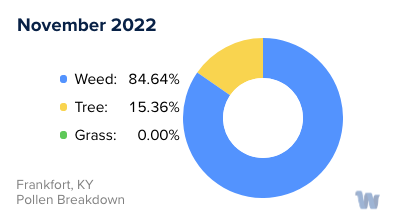
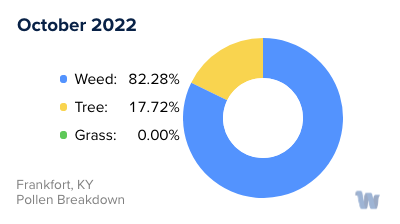
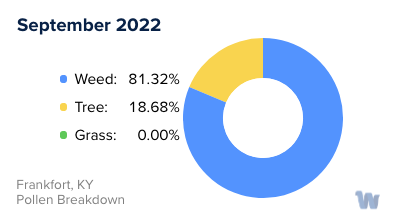
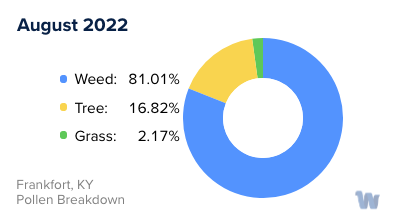
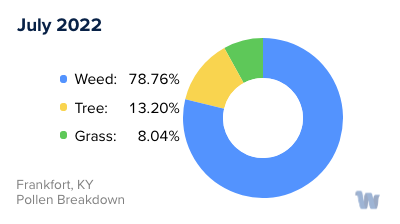
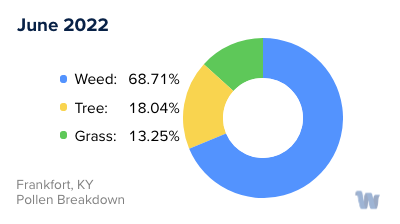
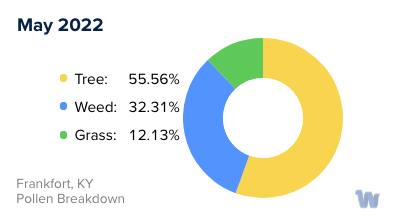
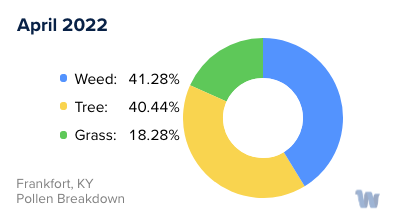
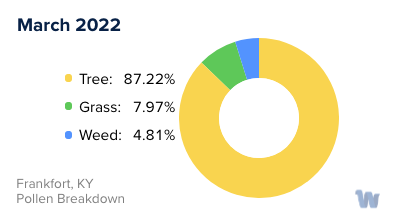
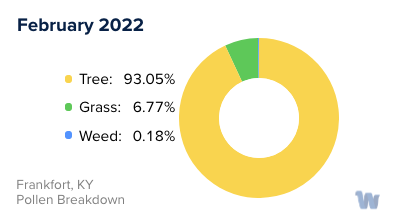
Pollen and Hay Fever in Frankfort, KY
In the city of Frankfort, Kentucky, pollen allergies are a common concern, especially during certain seasons. The primary contributors to these allergies are varied, with different plants releasing their pollen at different times throughout the year. Understanding these patterns can help residents prepare for the pollen onslaught and manage their allergy symptoms more effectively.
Starting as early as February and extending through April, trees are the most significant source of pollen. The exact timing can depend on the weather. If the winter is mild, trees may begin pollinating sooner. Conversely, if the winter is colder and longer, this process may be delayed. Among the trees, oak and cedar are usually the first to pollinate, with their pollen filling the air as temperatures consistently stay above 50 degrees. Later, in April, pine, birch, and mulberry trees follow suit.
Interestingly, the specific trees that cause the most trouble can change from month to month. For instance, juniper bushes, along with elm and maple trees, have been identified as the main culprits during certain periods.
As the year progresses, the types of pollen that dominate the air change. In the summer, grass pollen becomes the predominant allergen, causing hay fever symptoms in sensitive individuals. As we transition into the cooler months of fall and winter, weed and mold allergens take the lead.
In summary, understanding the different types of pollen and their seasons in Frankfort, Kentucky, can provide a predictive pattern for allergy sufferers. While the exact timing and severity of pollen allergies can vary from year to year based on weather conditions and other factors, this general pattern holds true and serves as a useful guide for those impacted by these allergies.

